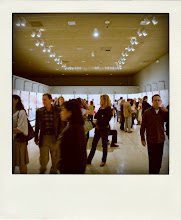
Smithsonian Magazine’s Museum Day is this Saturday, September 26th. And no, you don’t have to travel to
When presented, this card provides you with FREE admission to any of the following: San Diego Air & Space Museum, Mingei International Museum, Museum of Contemporary Art San Diego, San Diego Natural History Museum, Museum of San Diego History, Reuben H. Fleet Science Center, San Diego Chinese Historical Museum, Birch Aquarium, Quail Botanical Gardens, Museum of Making Music, San Diego Archaeological Center, California Cener for the Arts Escondido Museum and the Oceanside Museum of Art.
With the Smithsonian museums in Washington, D.C., being free year ‘round, this offers you a taste of what it would be like if a grand endowment fell from the sky to support San Diego’s many museums being free. While The San Diego Museum of Art is not part of this program, this is a perfect opportunity to see what other museums in San Diego are up to. Enjoy!






















